Many photographers, especially those new to night photography, may think they need clear skies and a small moon to photograph the night. Images of dark, star-filled skies, whether the stars are recorded as points of light or as long trails, are indeed awe-inspiring.

30 sec’s, f/2.8, ISO 5000
But there’s also incredible beauty to be discovered under varying meteorological conditions at night. I take my camera out in all kinds of nocturnal weather: partly cloudy, foggy, rainy, in lightning storms and snow squalls. It’s a chance to expand my repertoire and create unique images packed with drama and atmosphere. I’ve seen moonlight catch fog on fire, cast rainbows on sheets of rain, and paint fogbows on mist. I’ve recorded fingers of lightning fanning through cumulonimbus, and the Aurora Borealis backlighting clouds with fanciful colors.
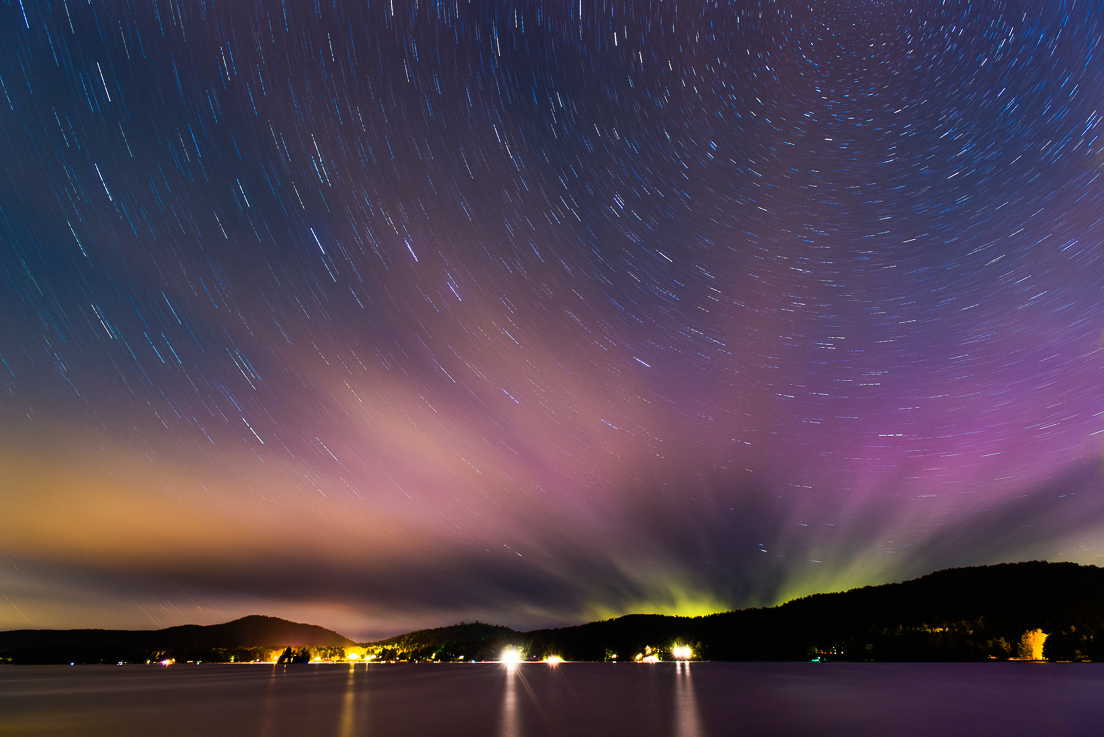
12 min’s, f/4, ISO 400
Prior to night shooting, I check weather forecasts on-line. Wunderground.com, weather.com, and noaa.gov provide hourly forecasts of sky conditions. AccuWeather.com has an Astronomy tab that lists stargazing conditions over several nights, by location, based on the amount of cloudcover and phase of the moon. I get excited when forecasts call for intermittent clouds. Just as with daytime photography, at night clouds can lead to more interesting images. They take on the colors of the atmosphere and reflect artificial lights from below. When clouds are sufficiently thin, or there’re breaks in them, the stars and moon shine through. Moving clouds streak through the sky during long exposures. They splay dramatically when they’re coming at you or going directly away from you. Using a wide angle lens will accentuate the effect.
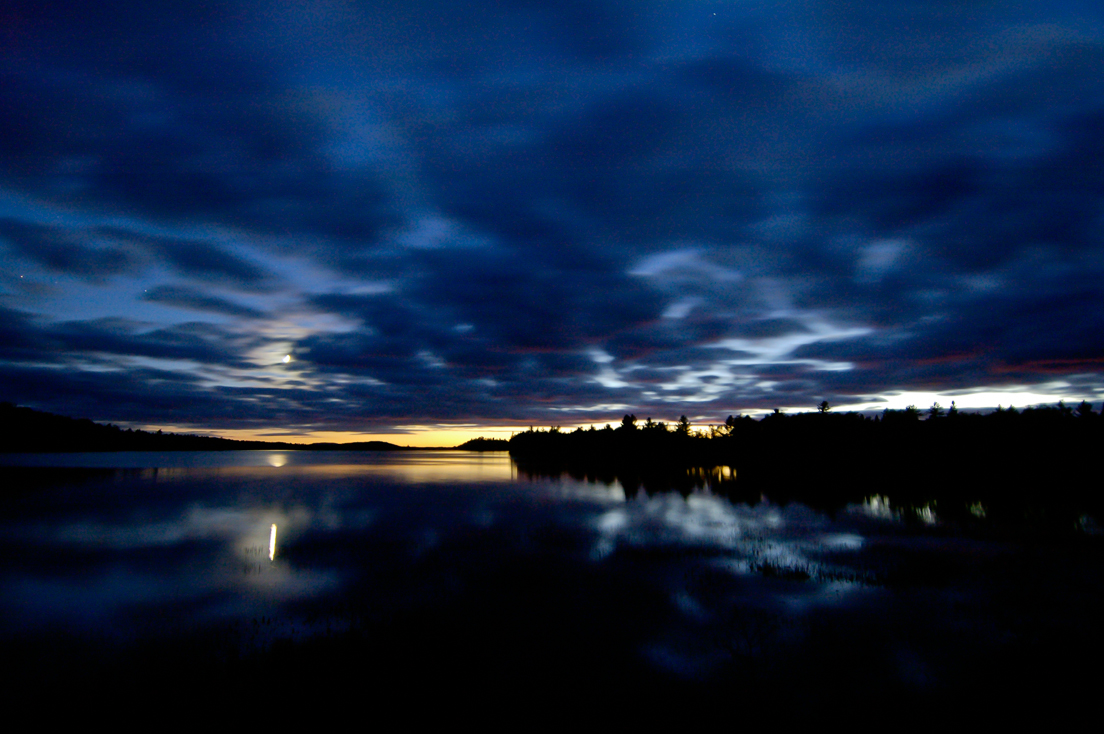
30 sec’s, f/4, ISO 400
Even total cloudcover can be photogenic at night. I was leading a night photography workshop to Newport, Rhode Island. We gathered at a nearby beach where I gave a short session on nighttime camera settings as we stood under umbrellas in a torrential downpour. Several members looked as if we should pack it in. But we stuck it out and were rewarded. In the fifteen minutes it took to drive to Newport Harbor, the rain stopped. Clouds hung low over the world-famous sailing mecca, colored by the city lights. I made this image, one of my all-time favorite night images. Note how the lights paint the clouds in contrasting cool and warm tones, and how the long exposure has smoothed the clouds and water, and softened their colors to pastels.
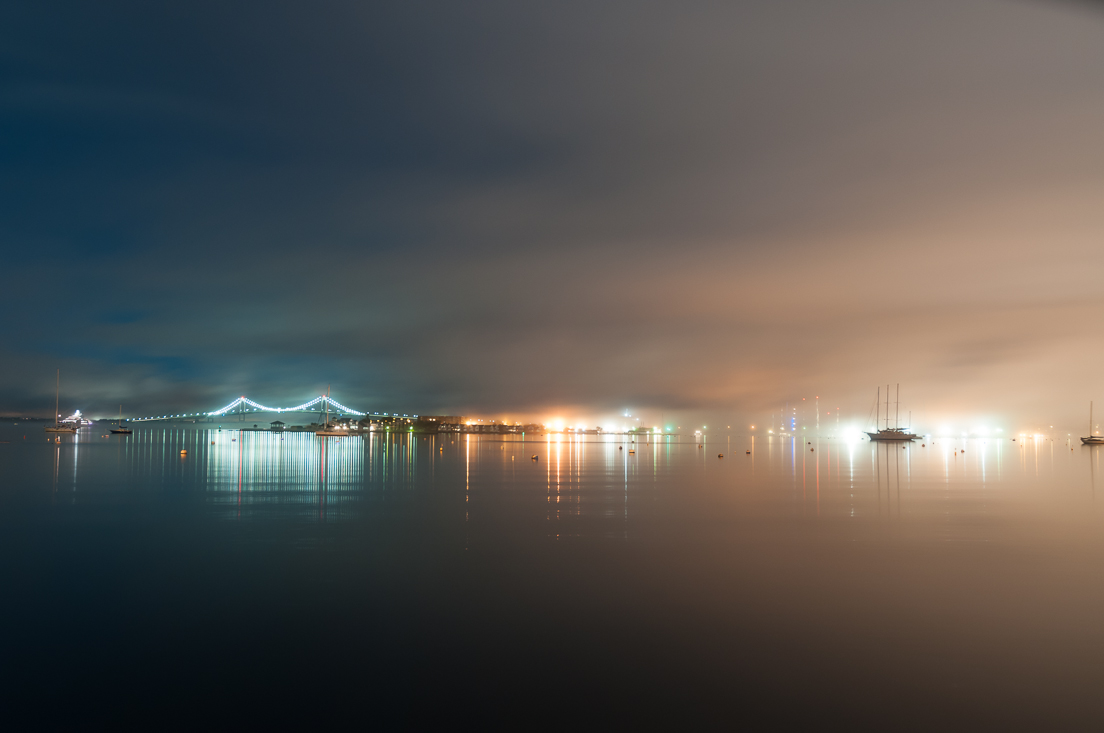
30 sec’s, f/5.6, ISO 200
Night fog lends a certain cinematic atmosphere. I experienced some amazing fog at Fourth Lake in the central Adirondacks. On a summer night it streamed down a hillside, splayed out across the lake, and billowed up against the far shore. The lights of a dock and gazebo colored it. The Big Dipper shone above.
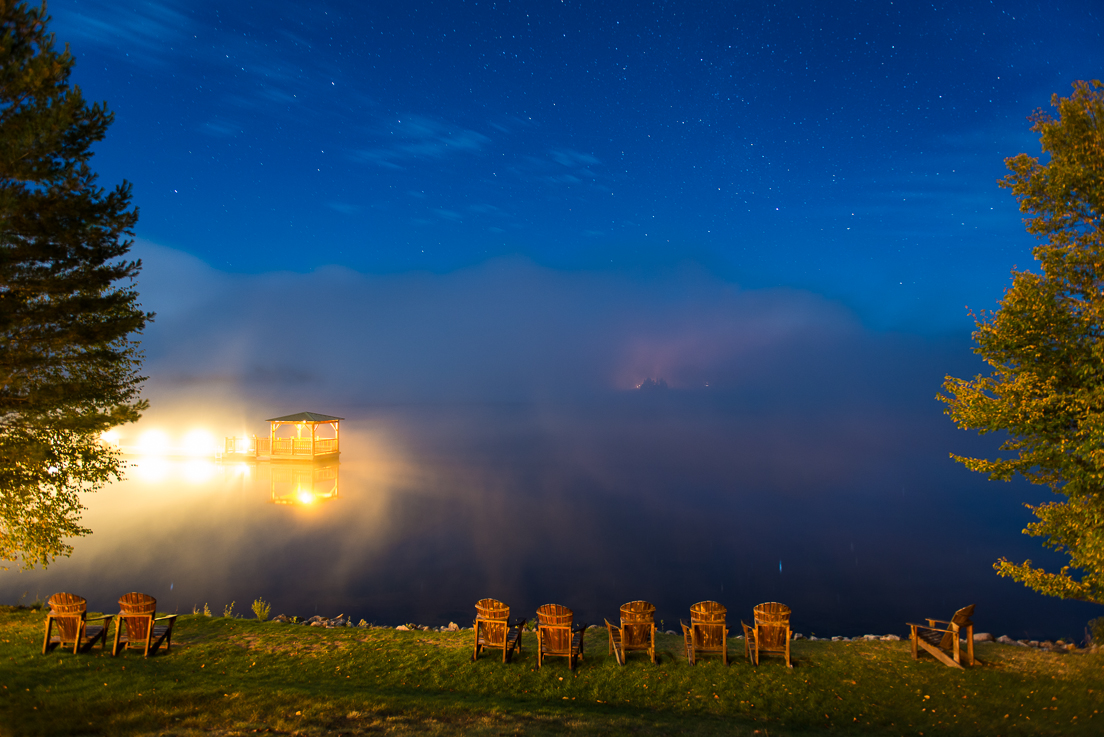
30 sec’s, f/2.8, ISO 800
I led a workshop to Nauset Light on Cape Cod one spring night. Skies were clear but for a layer of fog that hung over the top of the lighthouse. The light rotated through the fog and I made this image, reminiscent of a Thomas Kincade painting.
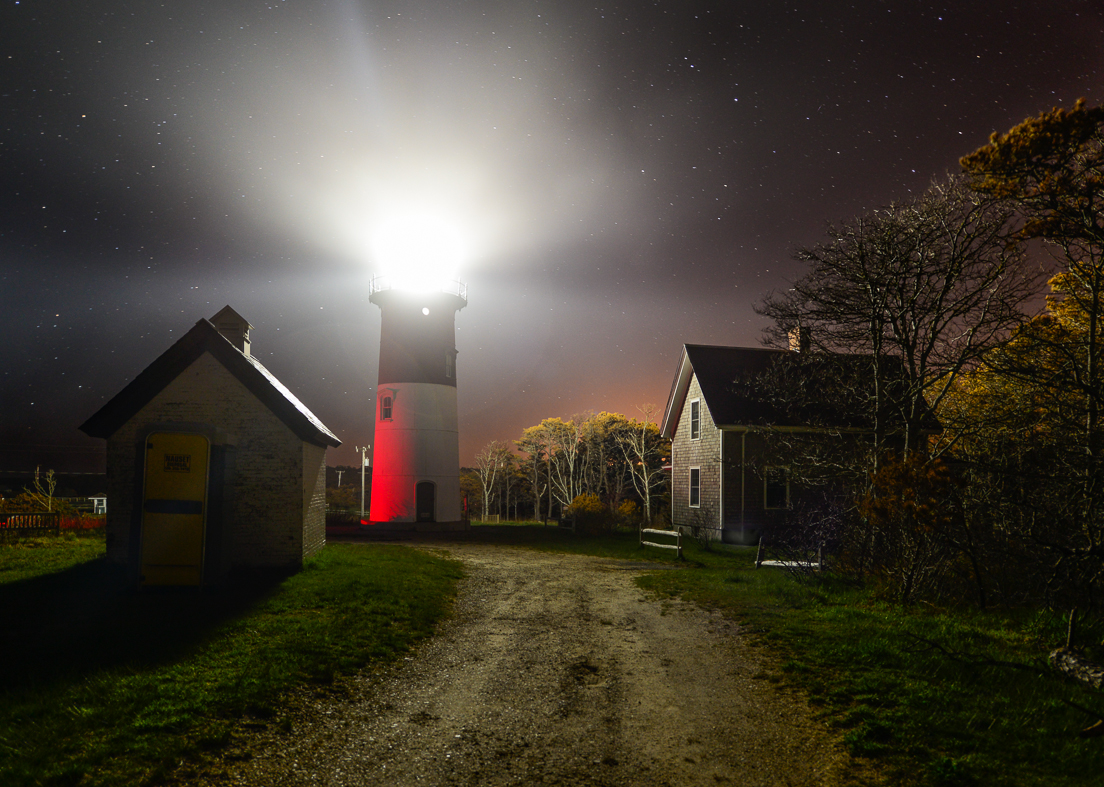
30 sec’s, f/2.8, ISO 800
At Follensby Clear Pond in the Adirondacks an advancing thunderstorm was overtaking a starry sky. Along the leading edge a night rainbow appeared, cast not by sunlight but by moonlight, as the moon rose behind me. Sheets of rain fell beneath the stars. You can’t make such images under clear conditions!
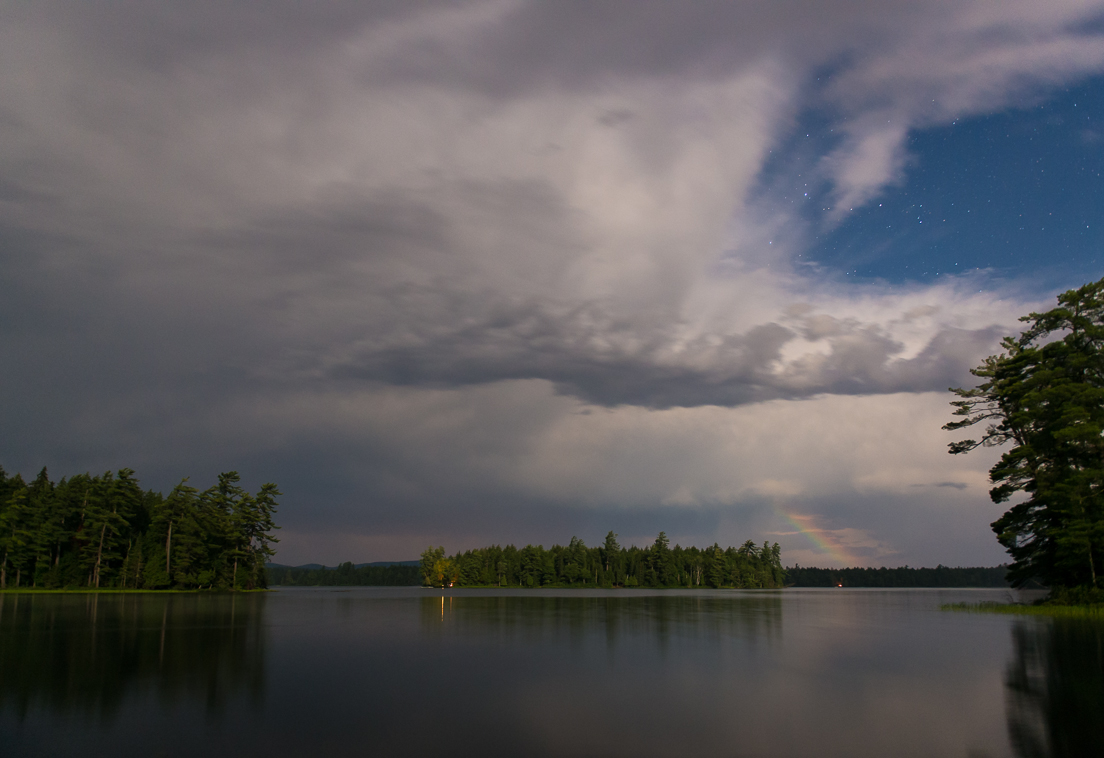
8 sec’s, f/2.8, ISO 3200
In Pittsfield, Massachusetts I shot a time-lapse sequence of a summer thunderstorm over Silver Lake. Using a hahnel Giga T Pro wireless remote with a built-in intervalometer, I shot 10-second exposures, separated by one second, over about 35 minutes. Many of the images didn’t capture lightning bolts, but several did. In StarStax image stacking software I blended four images that contained bolts using Lighten blend mode. The software combined the brightest parts of each image — the lightning bolts and lit clouds — to render this composite. Be extremely cautious photographing thunderstorms. Lightning can strike up to five miles out from a storm cell. I feel relatively safe shooting receding storms with the wireless remote while I take shelter in my vehicle.
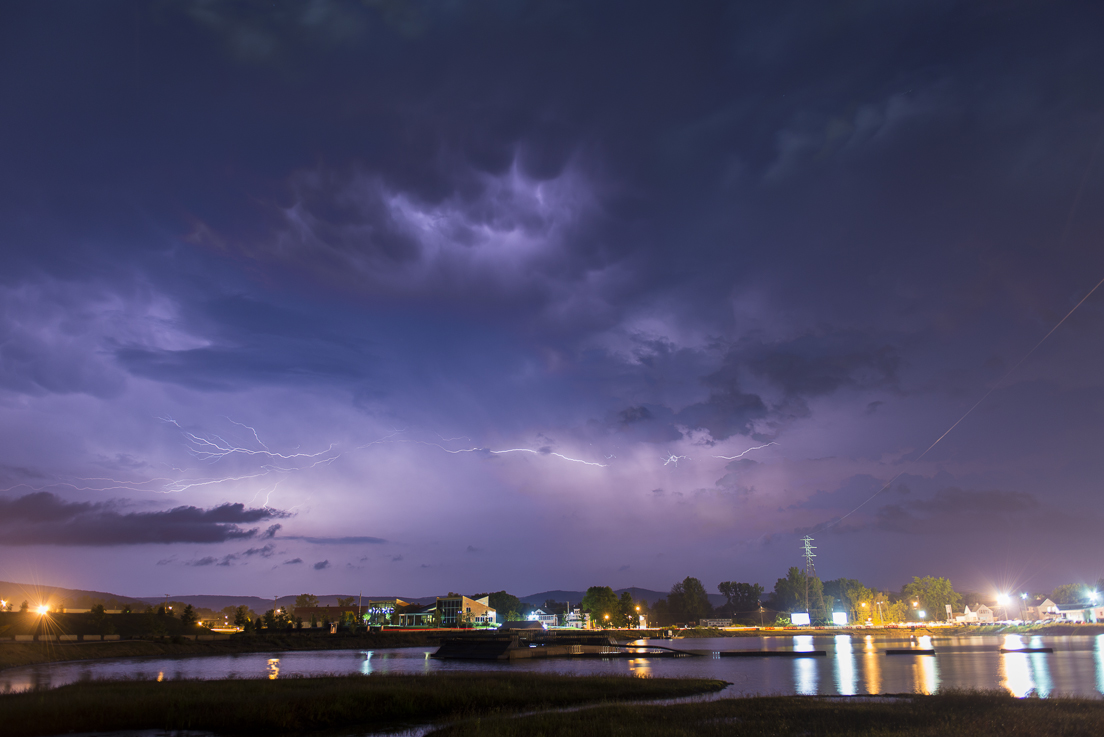
Each exposure: 10 sec’s, f/2.8, ISO 200
The most astounding nocturnal weather event I’ve witnessed took place at Moss Lake in the Adirondacks on a cool summer night. As the night progressed, a low-lying fog thickened over the lake. The Milky Way towered above. Eventually the half moon rose behind me, magically projecting a multi-colored moonbow on the fog, the shadows of bare shoreline trees beneath it. What special conditions coalescing at once!

30 sec’s, f/2.8, ISO 5000
So don’t limit your night shooting to clear skies; venture out in all kinds of weather and explore the artistic possibilities. You’ll find that as beautiful as the resulting images may be, the ultimate reward is discovering the majesty of Nature at work after dark.
Mark Bowie has authored two extensive e-books on night photography: The Light of Midnight and After Midnight. They are available through his website: www.markbowie.com. He is a staff instructor with the Adirondack Photography Institute and will be leading several night photography workshops and seminars this year, in the Adirondacks and on Cape Cod. Mark is a much sought after public speaker and leads seminars and field sessions for camera clubs. He is sponsored by Hunt’s Photo. Visit www.markbowie.com/workshops for details of upcoming events.